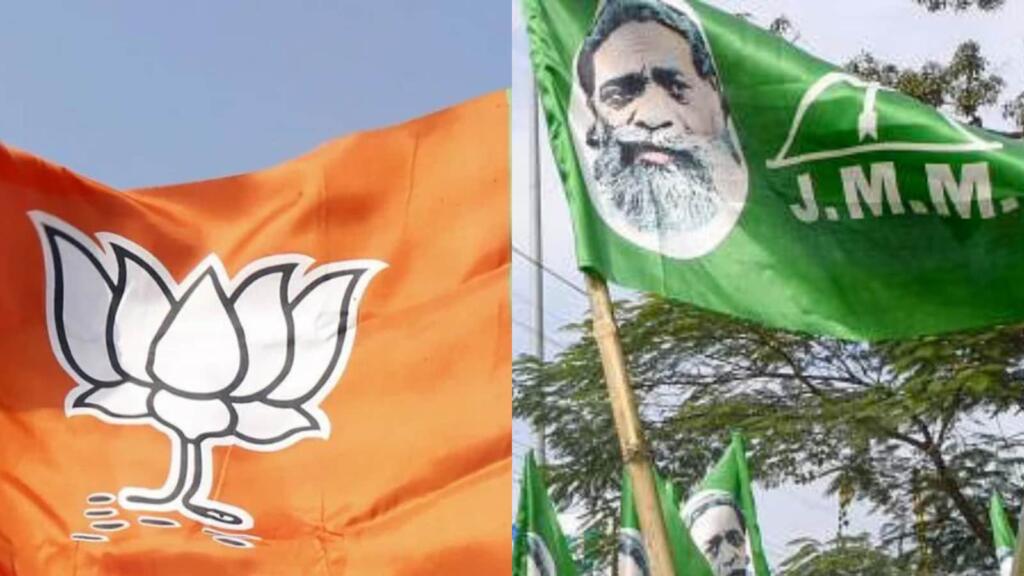As Jharkhand approaches its assembly elections, the issue of Bangladeshi infiltration has become a hot topic. This long-standing problem is expected to play a significant role in the upcoming polls, especially in tribal-dominated areas like the Santhal Pargana region. The influx of Bangladeshi illegal immigrants has raised concerns about changing demographics, cultural shifts, and potential security risks.
Recent High Court Directives Spark Debate
The Jharkhand High Court recently ordered the state government to develop a plan for identifying and deporting illegal immigrants from the Santhal Pargana. This directive has reignited the debate between the ruling Jharkhand Mukti Morcha (JMM) alliance and the opposition Bharatiya Janata Party (BJP). The court’s decision has brought the issue of Bangladeshi infiltration to the forefront of political discussions in the state.
The BJP has seized this opportunity to criticize the current government’s policies, claiming they have led to demographic changes in the Santhal region due to large-scale cross-border infiltration. They argue that the JMM-led government has been lenient in addressing the issue, potentially compromising the state’s security and cultural fabric.
The Extent of Bangladeshi Infiltration
Estimating the number of Bangladeshi infiltrators in India is challenging due to their clandestine entry. However, in 2016, a government official stated that approximately 20 million illegal Bangladeshi nationals were living in India. This staggering figure highlights the magnitude of the problem and its potential impact on various states, including Jharkhand.
The porous nature of the India-Bangladesh border, spanning over 4,000 kilometers, makes it difficult to prevent illegal crossings. Moreover, the riverine sections of the border pose additional challenges for surveillance and monitoring.
Jharkhand’s Santhal Pargana: A Focus Area
The Santhal Pargana region, which includes districts like Sahibganj and Pakur, has been particularly affected by Bangladeshi infiltration. These areas border West Bengal, making them vulnerable to illegal entry. The proximity to Bangladesh and the presence of established Bangladeshi communities in neighboring states have made it easier for infiltrators to blend in and settle in Jharkhand.
Demographic Shifts and the “Jamai Tola” Phenomenon
Reports suggest that some areas in the Santhal Pargana have experienced rapid demographic changes. A concerning trend is the emergence of “Jamai Tola” – localities where Bangladeshi infiltrators allegedly marry tribal women to gain land rights. This practice not only alters the demographic composition but also raises concerns about the exploitation of tribal communities and their resources.
The Jharkhand High Court has called for action on this issue, directing officials to address the situation promptly. The court’s intervention underscores the severity of the problem and the need for immediate action to protect tribal interests and maintain social harmony.
Impact on Tribal Communities
The influx of illegal Bangladeshi immigrants has had a significant impact on Jharkhand’s tribal communities. Many tribal leaders express concern about the erosion of their cultural heritage and traditional way of life. The alleged land-grabbing through marriages has led to tensions between tribal groups and the immigrant population, threatening the delicate social fabric of the region.
Political Reactions to Bangladeshi Infiltration
BJP leaders have voiced strong concerns about the changing demographics in the Santhal region. Former Chief Minister Babulal Marandi highlighted the decline in tribal population and increase in Muslim population in Pakur district between 2001 and 2011. These statistics have been used to argue for stricter measures against illegal immigration and better protection of tribal rights.
The JMM, however, has countered these claims, questioning the BJP’s focus on Bangladeshi infiltration while other border issues persist. They argue that the BJP is using the issue to polarize voters and divert attention from other pressing concerns in the state.
Bangladeshi Infiltration as a Key Election Issue
As the assembly elections approach, the issue of Bangladeshi infiltration is likely to take center stage, particularly in the Santhal region. BJP leaders have indicated that protecting “Roti, Beti, and Mati” (Bread, Daughters, and Land) will be a key campaign focus. This slogan encapsulates their commitment to preserving local resources, protecting tribal women, and safeguarding land rights.
The opposition party plans to campaign on enacting laws to prevent land occupation by infiltrators if voted into power. They argue that such measures are necessary to protect the interests of Jharkhand’s indigenous population and maintain the state’s cultural identity.
Challenges in Addressing Bangladeshi Infiltration
Tackling the issue of Bangladeshi infiltration presents several challenges. Identifying and deporting illegal immigrants is a complex process that requires coordination between state and central agencies. Additionally, there are humanitarian concerns to consider, as many immigrants have been living in the state for years and have established families and livelihoods.
Conclusion
The debate over Bangladeshi infiltration in Jharkhand, especially in tribal-dominated areas, is set to be a major talking point in the upcoming assembly elections. As both parties prepare their campaigns, the issue’s impact on tribal communities and the state’s demographic makeup will likely remain at the forefront of political discussions. The outcome of these elections may well hinge on how effectively each party addresses the concerns surrounding Bangladeshi infiltration and its effects on Jharkhand’s social, economic, and cultural landscape.
ALSO READ: China building infrastructure in Illegally Occupied Area near Pangong Lake
